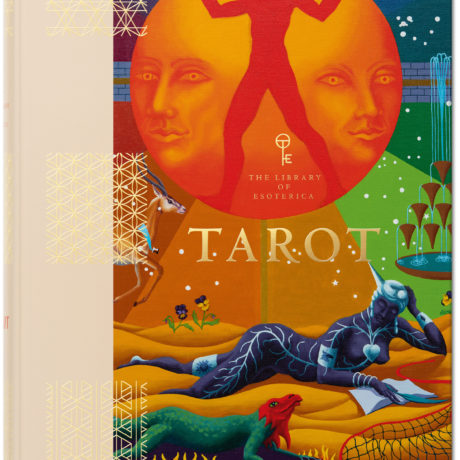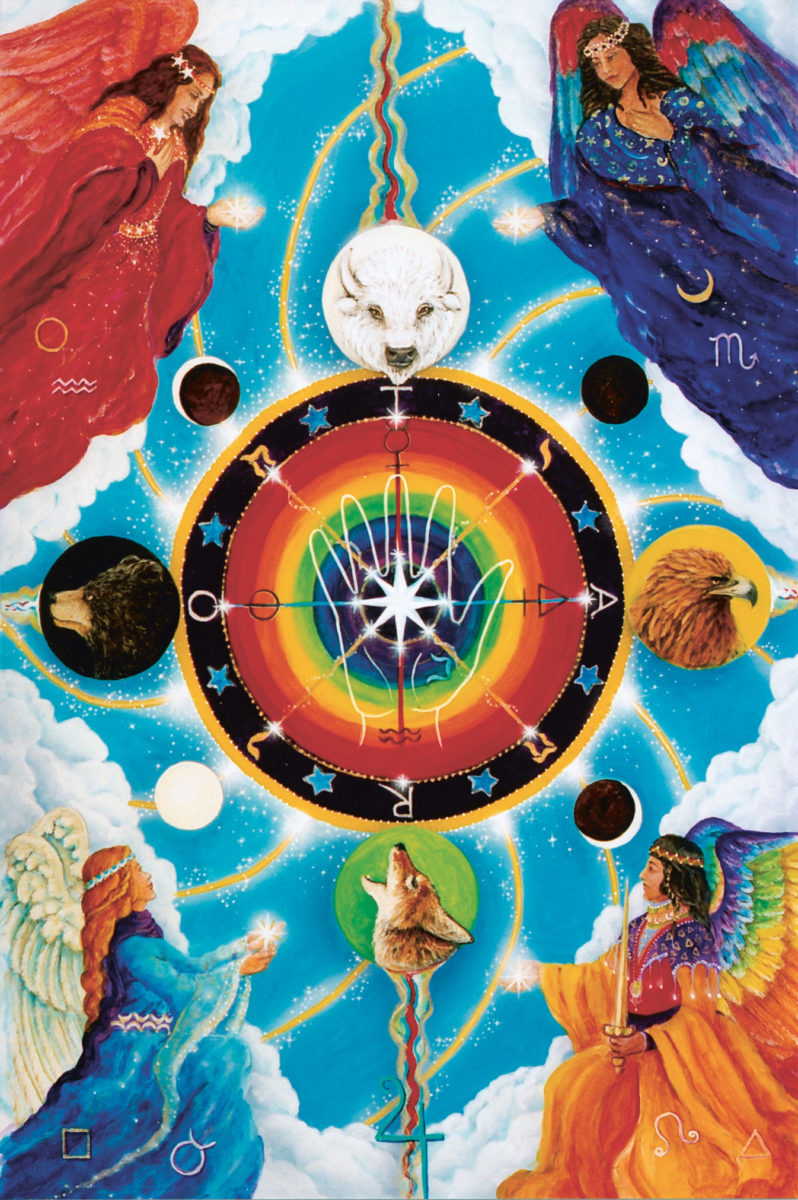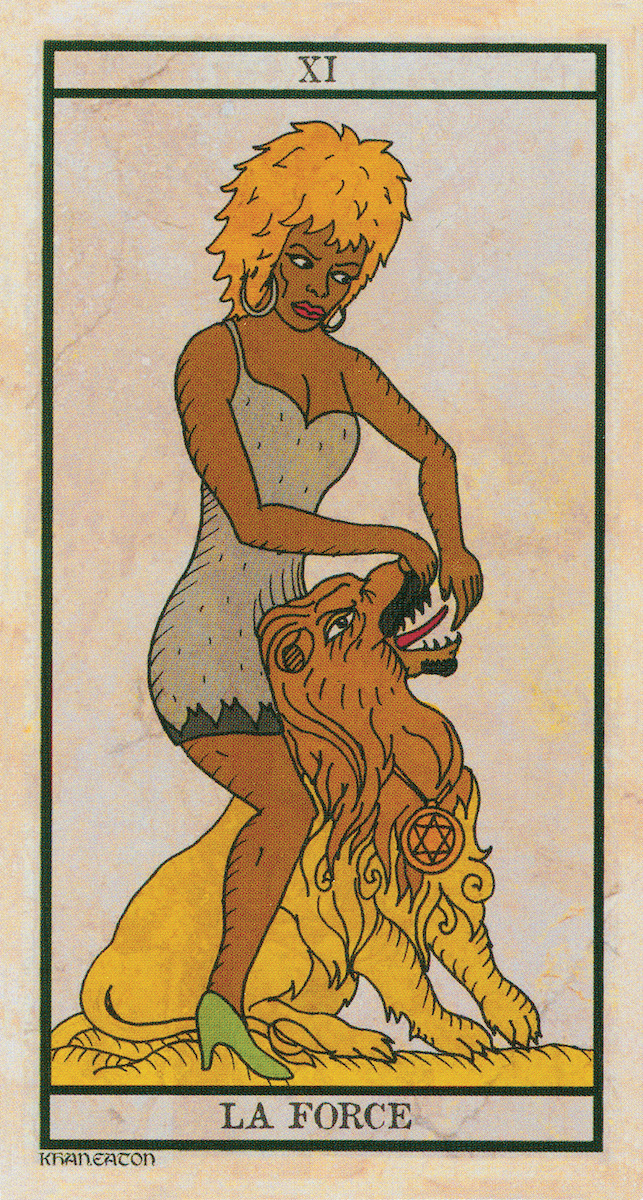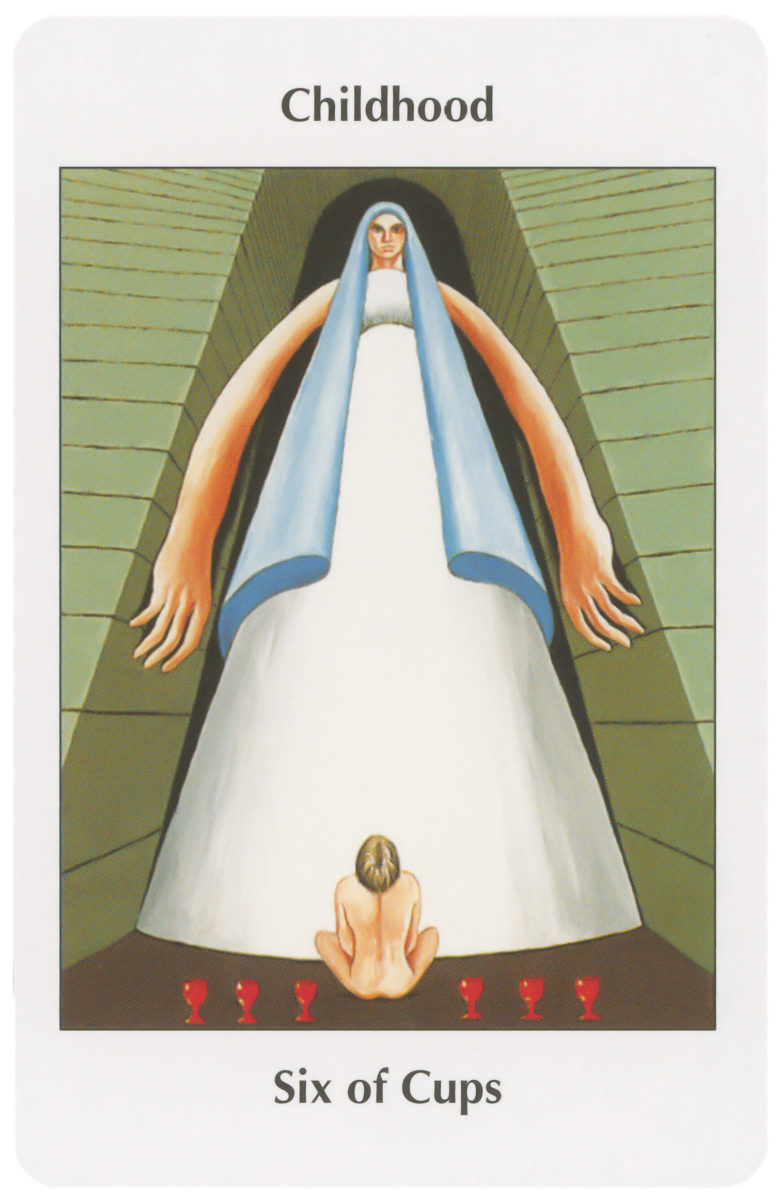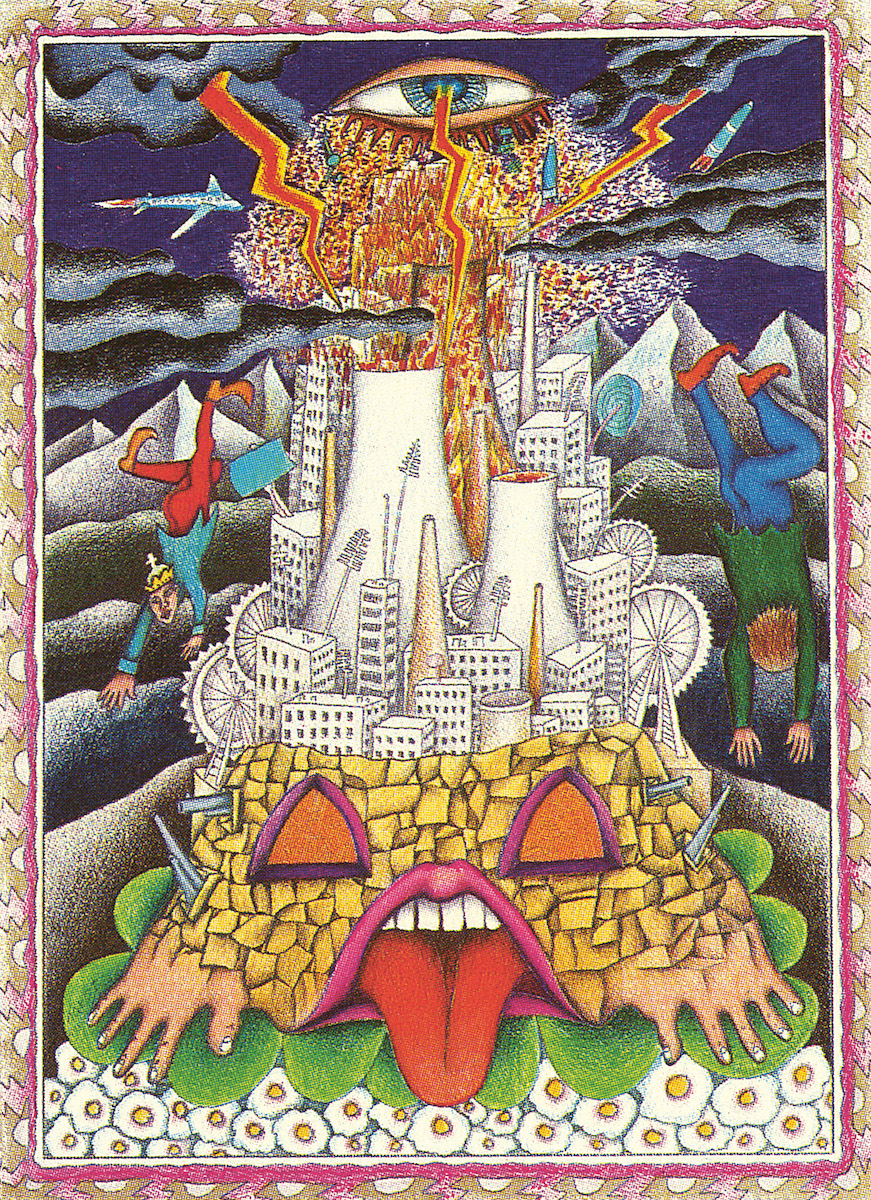
The art of Tarot has a long and mysterious history. The origins of this introspective form of divination has been attributed to a range of ancient rituals including Middle Eastern card games and the teachings of the I Ching, with the symbolic power of the highly illustrative deck continuing to fascinate to this day.
A new book published by Taschen’s The Library of Esoterica, which explores mystical concepts and practices as translated through art, takes an expansive look at the evolution of the Major and Minor Arcana, charting an ongoing obsession for elaborately decorated decks from the Renaissance to the present day. Combining historical timelines, scholarly insight, philosophical readings and an in-depth dissection of the symbolism of each card, it provides a crash course in cartomancy.
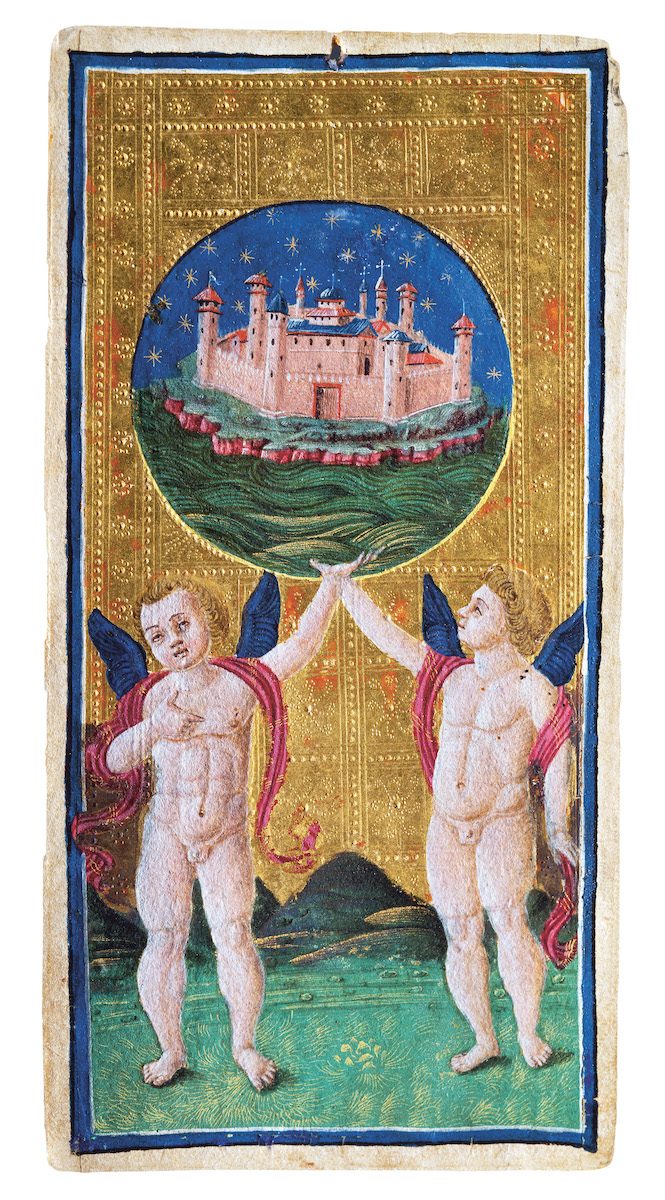
The World: Bonifacio Bembo & Francesco Sforza, “Visconti Brambilla Tarot,” 1463
While there are plenty of examples of antique cards—including the Visconti-Sforza, the oldest in existence complete with hand-painted gilded images—some of the most exciting renditions come with more contemporary offerings. These include Penny Slinger and Nik Douglas’s interpretation of the Tantric Dankini Oracle, with the former explaining in her foreword that Tarot allows us to “access the energy of who we are, without having ourselves get in the way.”
“One of the most fascinating aspects of Tarot is the fact that everything is open to interpretation.”
There is also Michael Eaton & A. A. Khan’s Black Power Tarot, which replaces traditional archetypes with iconic African American musicians and artists, and Barbara Walker’s set, which centres the narratives of female-focused mythology.
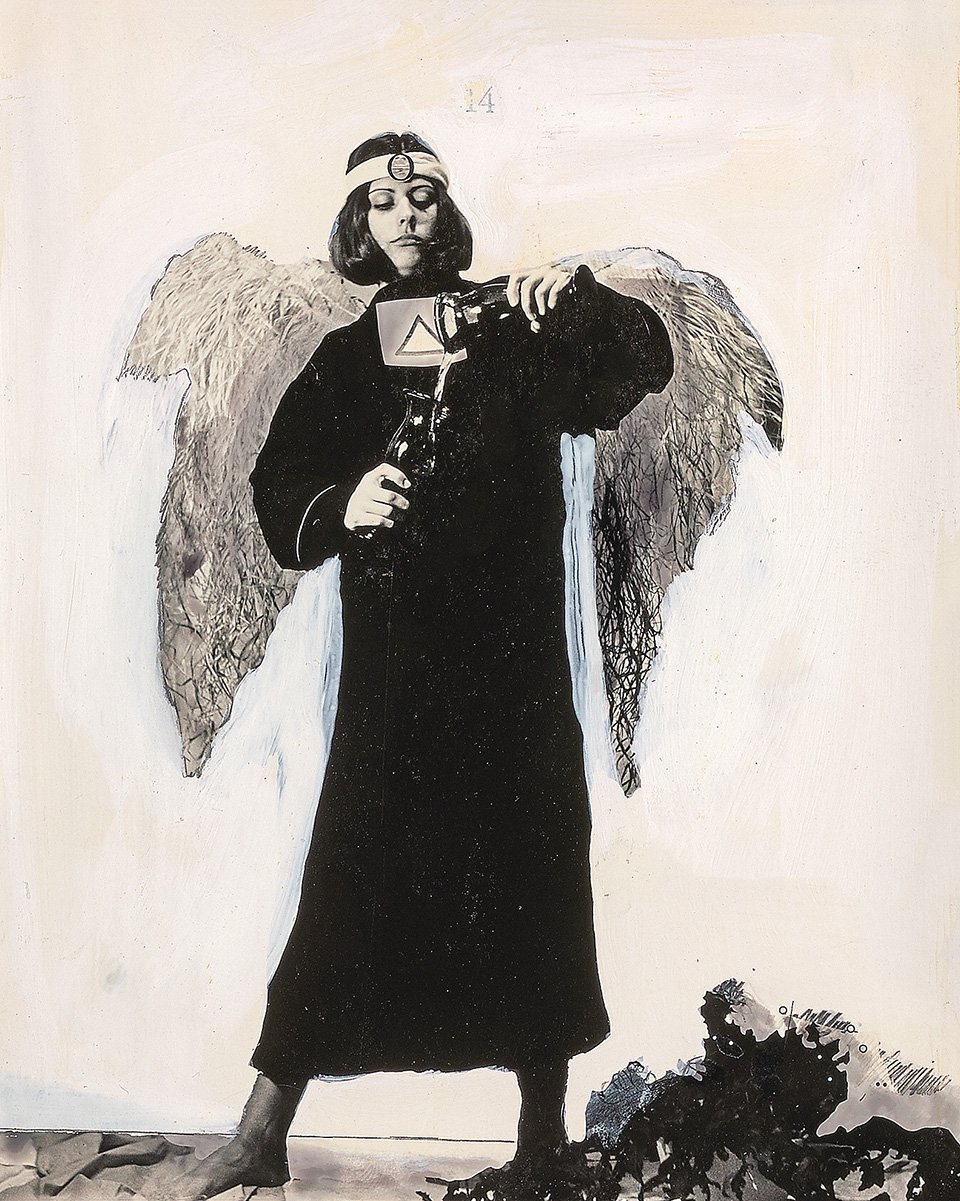
Temperance: Bea Nettles, “Mountain Dream Tarot,” 1975. © Bea Nettles 1975
The sheer scale of cultural divergences and interpretations within this collection proves just how pervasive Tarot reading has remained throughout the world. There are long-held connections with indigenous practices and ancient Egyptian hieroglyphs, as well as matriarchal structures and queer identities. The artform is also of course tied to the stars and sacred geometry
, transcending the strictures of organised religion in favour of something far more expansive.
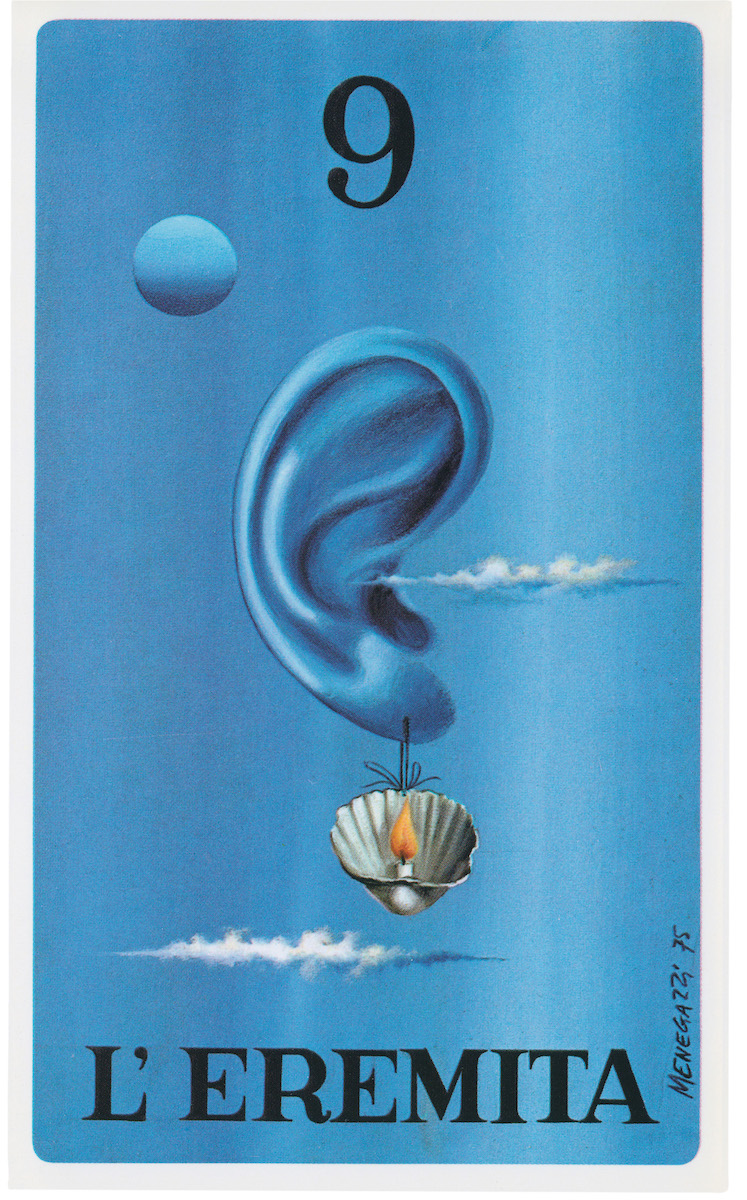
One of the most fascinating aspects of Tarot is the fact that everything is open to interpretation. Depending on how and when a card is selected, as well as an individual’s own mindset, symbolism can vary. For instance, The Lovers could allude to romance of self-fulfilment, while the shadowy figure of Death might not point to foreboding or catastrophe but rebirth and release.

The Empress: Sebastian Haines, “The Tarot of the Golden Serpent,” 2013 (detail) © Sebastian Haines
Ultimately, this is an inward-looking art that subverts many of the social structures we encounter in everyday life, and asks us to focus on the spiritual power and instincts held within. Whether or not you choose to pick up your own cards (and it is worth noting that this book ends with a handy “how-to” guide on how to read Tarot) this chronicle offers an enlightening survey of one of the world’s oldest forms of prophesising, in all its illuminated glory.
